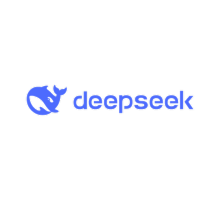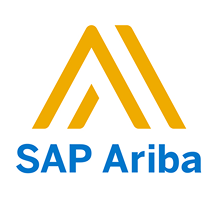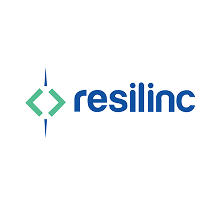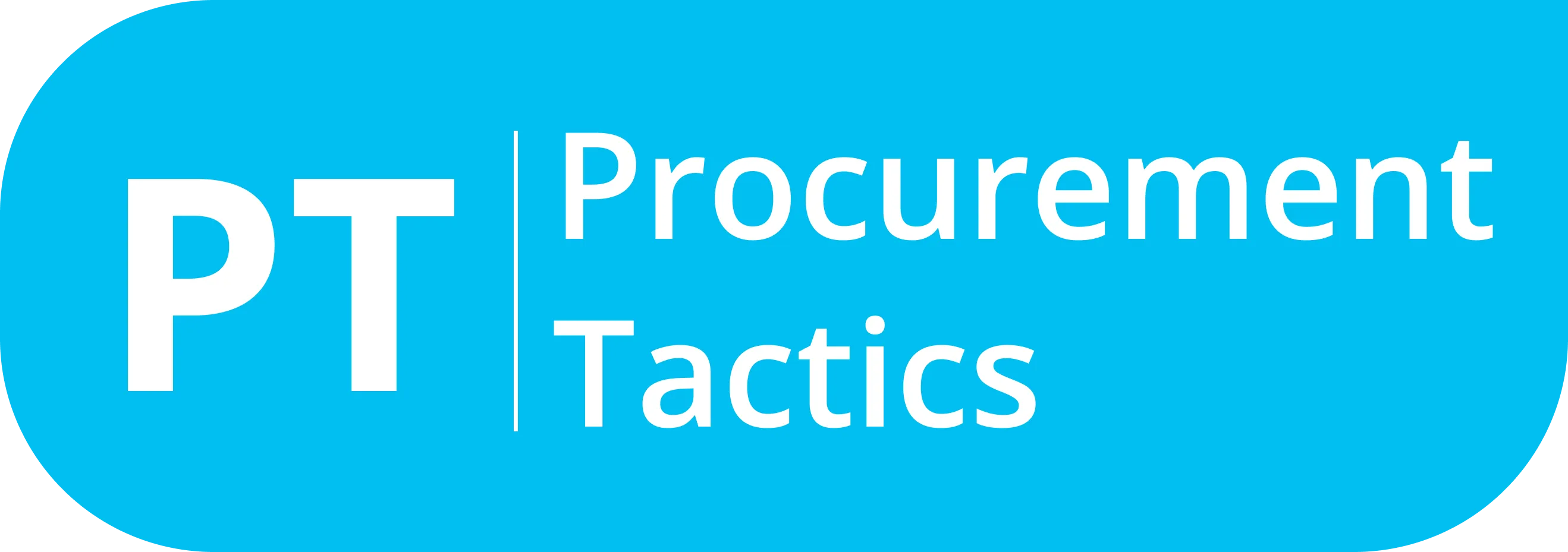Written by Marijn Overvest | Reviewed by Sjoerd Goedhart | Fact Checked by Ruud Emonds | Our editorial policy
16 AI Procurement Tools You Should Know in 2025

As taught in the Artificial Intelligence in Procurement Course / ★★★★★ 4.9 rating
What are AI Procurement Tools?
- AI procurement tools use artificial intelligence to simplify and speed up procurement tasks like supplier selection, contract analysis, and spend tracking.
- AI tools like ChatGPT, Coupa, SAP Ariba, and Resilinc help automate tasks and analyze data for better sourcing decisions.
- However, AI procurement tools depend on high-quality data and still require human judgment for complex procurement scenarios.
AI tools are no longer just a means to gain advantages; they have become essential as businesses navigate the evolving landscape of modern operations.
In this article, we’ll explore various AI tools you can integrate into your procurement process and identify the best areas for implementation. Let’s dive in!
The 16 AI Procurement Tools
General Generative AI Platforms
Below are general-purpose AI models that aren’t built specifically for procurement, but can be adapted to support tasks such as drafting contracts, analyzing spend data, or automating communication.


1. ChatGPT
ChatGPT, developed by OpenAI, is a widely known large language model (LLM) designed to understand and generate human-like text based on prompts. It stands as the most well-known AI tool, not just among procurement professionals but globally, with 4.7 billion monthly site visits—far exceeding all other AI platforms. This solidifies ChatGPT as the leading AI tool, maintaining its dominance in the market.
Usage:
- Automating routine tasks like purchase order management and invoice processing
- Analyzing supplier data for better vendor selection and management
- Reviewing contracts to identify risks and suggest improvements
- Providing market insights to support pricing and negotiation strategies
- Generating reports and data summaries for informed decision-making
Limitations:
- Misinterpreting nuanced procurement scenarios, leading to inaccurate recommendations
- Potential security risks when handling sensitive procurement data
- Lacking specialized procurement knowledge, especially in niche industries
- Producing inaccurate outputs when provided with poor-quality data
- Inability to replace human expertise in negotiations and strategic decision-making

2. DeepSeek
DeepSeek is a large language model (LLM) that operates similarly to ChatGPT. Its efficiency challenges the notion that only bigger budgets and high-end chips drive AI advancements. Often regarded as a rival to ChatGPT, DeepSeek has gained a reputation for delivering responses that many users find superior compared to ChatGPT.
Usage:
- Automating repetitive tasks such as purchase order generation, invoice validation, and supplier communication.
- Analyzing supplier performance by processing historical data, compliance records, and risk factors.
- Reviewing contracts to flag inconsistencies, suggest clauses, and summarize key terms efficiently.
- Conducting market research by aggregating trends, pricing benchmarks, and competitor analysis.
- Generating procurement reports with structured summaries, cost breakdowns, and actionable recommendations.
Limitations:
- Industry-specific gaps in knowledge, particularly for highly specialized procurement sectors.
- Dependence on input quality—inaccurate or incomplete data may lead to unreliable outputs.
- Limited real-time data integration, requiring manual updates for dynamic procurement scenarios.
- Potential biases in AI-generated suggestions, requiring human oversight for critical decisions.
- Data security risks when processing sensitive procurement information, as highlighted in a CSIS analysis, which warns of vulnerabilities in AI systems handling confidential data.

Usage:
- Automating document management by summarizing, categorizing, and organizing contracts, purchase orders, and invoices within Google Drive.
- Streamlining communication by drafting and refining supplier emails directly within Gmail.
- Enhancing data analysis by processing procurement reports, cost structures, and supplier performance metrics in Google Sheets.
- Assisting in scheduling and coordination by integrating with Google Calendar to set procurement meetings and deadlines.
- Extracting insights from procurement-related documents in Google Docs, identifying key trends, clauses, and compliance issues.
Limitations:
- Heavy reliance on Google’s ecosystem making Gemini less effective for companies using non-Google platforms.
- Potential inaccuracies when summarizing complex procurement contracts or financial reports.
- Limited ability to provide real-time procurement data insights beyond the scope of stored Google documents.
- Privacy concerns when processing sensitive procurement data within Google’s cloud infrastructure.
- Difficulty handling highly specialized procurement queries that require domain-specific expertise beyond general AI capabilities.

4. Claude
Claude, just like the other generative AIs like ChatGPT, Deepseek, and Bard, is designed to enhance various professional workflows, including those in procurement. By leveraging Claude’s capabilities, procurement professionals can streamline tasks, improve efficiency, and make more informed decisions.
Usage:
- It can assist procurement professionals by extracting key requirements from documents, generating proposal outlines, and even drafting content, thereby reducing the time and effort involved in bid preparation.
- Claude can analyze stock levels, identify reorder points, and suggest procurement timelines to prevent shortages or overstocking.
- It can gather and summarize market trends, evaluate potential suppliers, and help procurement teams make informed sourcing decisions.
Limitations:
- Sensitive procurement data must be handled carefully to prevent leaks or compliance violations.
- While Claude provides valuable insights, procurement professionals should consistently verify AI-generated content to ensure reliability.

5. IBM Watsonx
IBM Watsonx is an AI and data platform designed to help companies build, deploy, and manage AI models across various environments. It offers a suite of tools tailored for data scientists, AI developers, and business analysts aiming to integrate AI solutions into their operations.
Usage:
- Watsonx Orchestrate automates vendor interactions, including onboarding and communication, reducing manual effort and accelerating the procurement cycle.
- The platform assists in managing contracts by automating tasks such as contract initiation and approval processes, ensuring compliance and reducing administrative overhead.
- It can minimize errors and speed up the procure-to-pay cycle by automating order management workflows, ultimately enhancing overall operational efficiency.
- It provides AI-driven insights into supplier risks and opportunities, enabling informed decision-making.
Limitations:
- IBM RPA skills may function within the Watsonx Orchestrate chat but not within workflows, indicating potential inconsistencies in RPA integration.
- To fully leverage the platform’s capabilities, procurement teams may need comprehensive training, which can be resource-intensive.
- Only one user per tenant can import each industry sample or discovery tutorial. The importing user must add others as collaborators for shared access.

6. Mistral AI
Mistral AI is an open and portable generative AI platform for businesses and developers. It offers a range of commercial and open-source models that are focused on openness, portability, value, speed, and customizability.
Usage:
- Mistral AI models are able to view historical procurement data to identify patterns and trends and assist in forecasting demand and strategic planning.
- By comparing various sources of information, Mistral AI can assist in assessing supplier performance, risk considerations, and compliance, which can lead to improved decision-making.
- The platform is able to scan and read contract documents and recognize key terms, obligations, and risks, thereby facilitating contract management processes.
- It also processes routine procurement operations such as purchase order generation and invoice processing in an automated fashion, reducing the process and potential errors.
Limitations:
- Greater speed in producing responses comes with a greater frequency of hallucinations over competitors, which impacts the output’s reliability.
- The site can be expensive for individual users or small firms, especially those who need to have access to advanced features and functionality.
- High-performance versions can be demanding in terms of hardware, which might be out of the way for some.
AI-Powered Procurement Solutions
The following are specialized procurement and supply chain AI-powered solutions. They’re designed to streamline sourcing, supplier management, contract analysis, and risk monitoring, making them directly valuable for procurement teams.


7. Sap Ariba
SAP Ariba is a procurement platform that integrates artificial intelligence (AI) capabilities to enhance various procurement processes. By integrating AI, SAP Ariba helps organizations streamline procurement workflows, gain deeper insights, and improve decision-making.
Usage:
- Analyze procurement data to identify cost-saving opportunities and support strategic sourcing decisions.
- Evaluate supplier databases and market trends to recommend the best suppliers.
- AI-assisted recommendations direct users to preferred suppliers, ensuring policy compliance and cost efficiency.
- Identify and assess supplier and market risks to mitigate potential disruptions.
- AI-powered assistants generate contract drafts, support negotiations, and highlight potential risks.
- Streamlines invoice processing and approvals, increasing efficiency and reducing errors.
Limitations:
- Misinterpreting nuanced procurement scenarios, leading to potential inefficiencies.
- Security risks when handling sensitive procurement data.
- Limited understanding of industry-specific procurement needs in niche sectors.
- Dependence on data quality, as poor data can lead to inaccurate AI-generated insights.
- Inability to replace human expertise in high-stakes negotiations and strategic decision-making.

8. Jaggaer
JAGGAER, a cloud-based procurement solution, is used to streamline processes such as eProcurement, sourcing, supply chain collaboration, invoicing, and contract management. It offers features like supplier management, spend analytics, and inventory management, aiming to enhance efficiency and provide real-time insights for organizations.
Usage:
- JAGGAER provides an extensive suite of tools for sourcing, supplier management, and spend analytics, enabling businesses to optimize their procurement strategies effectively.
- Some users of this software have noted that its interface is intuitive and easy to navigate, facilitating smoother procurement processes.
- It offers automation features and customizable workflows, which help reduce manual effort and increase efficiency in procurement activities.
Limitations:
- The software has some cases of system performance problems, like slow lag times or non-connectivity, which may disrupt procurement processes.
- Its mobile functionality is restricted, and this can potentially impact accessibility and convenience for procurement professionals.
- Its cost might be pricy for small businesses.

9. Coupa
Coupa is a cloud-based Business Spend Management (BSM) platform that helps organizations optimize procurement, invoicing, expense management, and supplier collaboration. With AI-driven insights and automation, Coupa enhances efficiency, reduces costs, and improves visibility into business spending.
Usage:
- Coupa can automate purchase order creation, invoice processing, and expense management to improve efficiency.
- The software can analyze supplier performance based on compliance records, pricing trends, and risk factors.
- It can enhance contract management with centralized storage, automated compliance tracking, and AI-powered clause recommendations.
- The software can conduct market research by aggregating pricing benchmarks, industry trends, and supplier performance data.
Limitations:
- Coupa depends on data accuracy—incorrect or incomplete data may impact AI-driven insights.
- This platform has limited real-time data updates without proper integration, requiring manual intervention in some cases.
- AI-generated recommendations in Coupa may include biases, necessitating human oversight for critical procurement decisions.

10. Globality
Globality is a sourcing AI-based platform for automating the procure-to-pay process that helps companies optimize buying with better vendor discovery, smart cost reduction, and supply risk identification.
Usage:
- It can make procurement simpler through auto-sourcing using the ability to match requirements with the best vendors using lesser effort manually.
- It manages autonomous procurement workflows, speeding up decision-making and maintaining adherence to internal policies.
- Globality improves supplier competition by enhancing dynamic market pricing and benchmarking.
Limitations:
- It needs tight supervision as missing or poor-quality data can impact supplier recommendations.
- The platform’s effectiveness relies on enterprise-wide adoption, which may require change management efforts.
- AI-based supplier selection may introduce biases, requiring human oversight in critical procurement decisions.

11. Nova AI
Nova AI is an AI-driven product sourcing agent developed by Wonnda that assists businesses in discovering suppliers and manufacturers for their products.
Usage:
- Nova AI simplifies communication with suppliers via automated email interactions, such as customized templates suited to particular procurement requirements.
- The portal simplifies conventional procurement into a simple 5-step procedure only, enabling production firms to spend more time and effort on core activities.
- Nova AI helps to keep manufacturers’ credibility intact, preventing issues with the use of wrong emails.
- The platform assists in developing new products by providing recommendations and suggestions regarding potential suppliers, hence facilitating the idea-to-production process.
Limitations:
- Although Nova AI does provide customization, it may not include industry-specific templates that can be utilized to ease adoption for specific verticals.
- As with any advanced software, there is potential for a learning curve for those who are new to AI technologies. Training and onboarding processes may be required.
- Integrating Nova AI may require technical expertise, especially in connecting with other applications and systems.

12. Accio
Accio is a B2B procurement engine created by Alibaba using AI technology to change the way procurement is done by using sophisticated artificial intelligence. It has several features to help users find product ideas, connect with verified suppliers, and compare products in-depth in one easy-to-use platform.
Usage:
- Accio utilizes real-time market data to enable companies to identify best-selling and trending products in order to make informed business decisions.
- The platform assists users in the development of comprehensive requirements and matches them with authenticated suppliers through multimodal search functionality, thereby providing accurate correspondences.
- This permits the simultaneous analysis of various products with emphasis on major characteristics to enable effective discrimination among the most viable alternatives.
- Accio provides live assistance, responds to inquiries, and helps in the process of sourcing, thus improving user experience and choice.
Limitations:
- Accio’s AI will not always be able to pick up subtle procurement context requirements, thereby providing less customized recommendations.
- Several users have pointed out that Accio may experience some latency in processing very large datasets, something that could deter productivity when running heavy loads.
- The use of pre-existing information and algorithms could accidentally bring about bias or errors within the sourcing process, compromising the output’s reliability.

13. Resilinc
Resilinc is a leading provider of AI-driven supply chain risk management services, delivering cloud-based tools aimed at improving supply chain resilience, reducing risks, and supplying actionable insights and analytics.
Usage:
- Resilinc’s EventWatch AI tracks worldwide events in real-time, offering notifications on possible disruptions like natural calamities, geopolitical tensions, and cyberattacks, allowing procurement teams to proactively handle risks.
- The platform illustrates the complete supply chain network, including sub-tier suppliers, providing detailed insights into possible vulnerabilities and assisting in strategic sourcing choices.
- Resilinc assesses suppliers by considering multiple risk factors, such as financial health, regulatory compliance, and operational efficiency, helping procurement specialists make well-informed supplier choices.
- The software enables collaborative response strategies for supply chain interruptions, guaranteeing rapid recovery and consistency in procurement activities.
Limitations:
- The efficiency of Resilinc depends significantly on suppliers actively refreshing their details on the platform. Irregular data upkeep by suppliers may result in untrustworthy insights and risk evaluations.
- The platform’s comprehensive data tracking may lead to a large number of notifications, potentially leading to alert fatigue for users and complicating the prioritization of urgent matters.
- Users have reported difficulties in adapting the platform to their individual risk management requirements, perceiving it as rigid and deficient in customization features.

14. Zycus
Zycus is a cloud-enabled procurement platform that covers the full source-to-pay process, providing functionalities like strategic sourcing, supplier oversight, and contract administration. Its components consist of the Procurement Software Suite, Procure-to-Pay Suite, and Strategic Sourcing Suite, aimed at improving operational efficiency and offering transparency throughout the procurement process.
Usage:
- Zycus utilizes AI to examine large datasets, discovering patterns and relationships that improve the precision of demand forecasting. This allows companies to foresee market trends and proactively modify their procurement strategies.
- Employing sophisticated AI algorithms, Zycus assesses suppliers through performance, risk, and sustainability criteria, enabling informed and strategic choices for supplier selection to enhance supply chain resilience.
- Zycus streamlines regular procurement activities like generating purchase orders and processing invoices, decreasing manual labor, lowering mistakes, and speeding up procurement timelines.
- Zycus constantly observes market trends and supplier well-being, offering immediate notifications regarding possible risks, and allowing procurement teams to quickly adapt to unexpected developments.
Limitations:
- The platform provides a few pre-existing reports and has no customization features, which may impede data-informed decision-making and necessitate extra manual analysis.
- The significant upfront costs and continuous upkeep expenses cast doubts on the long-term ROI, especially for smaller entities.
- The supplier management system demands considerable input from suppliers, which may be challenging for them to embrace, possibly affecting the efficiency of supplier-related processes.

15. Kira Systems
Kira Systems is a contract analysis platform powered by AI, utilizing machine learning to extract, assess, and structure essential information from contracts and various legal documents. It is frequently utilized in procurement activities to enhance contract evaluation, reduce risks, and guarantee compliance by automating the extraction of essential terms and conditions.
Usage:
- Kira Systems streamlines contract reviews by pinpointing and extracting essential clauses, obligations, and risk indicators, minimizing manual review duration and enhancing precision.
- The platform aids procurement teams in evaluating supplier contracts for possible risks and compliance concerns, facilitating proactive risk management and improved negotiation results.
- By optimizing the due diligence process in supplier onboarding, Kira Systems assists in confirming contract consistency and identifying discrepancies, which is vital for sustaining supply chain integrity.
- The platform collects and examines contract data, delivering actionable insights that guide strategic procurement choices and enhance efficiency.
Limitations:
- Kira Systems’ pricing model can be relatively high, especially for smaller businesses, resulting in a notable investment when compared to some market alternatives.
- In cases of extremely complex or atypically structured contracts, Kira Systems might overlook nuanced language or intricate legal terminology, requiring additional human review and potentially hindering decision-making speed.
- Considering that Kira Systems handles very sensitive legal and contractual data, several users have expressed worries about data security, privacy, and compliance—particularly for organizations with rigorous data governance needs.

16. Ivalua
Ivalua’s Intelligent Virtual Assistant (IVA) is a generative AI-powered assistant embedded within its unified source-to-pay (S2P) procurement platform.
IVA is designed to streamline procurement workflows, enabling tasks like supplier research, contract analysis, RFP drafting, spend insights, and improvement planning, all via a no-code conversational interface.
It taps into both internal S2P data and external models like OpenAI LLMs via Azure or Ivalua fine-tuned models while adhering to high data privacy and governance standards.
Usage:
- Supplier Insights: Quickly gathers and summarizes supplier information, enriching profiles for better sourcing and risk assessment.
- Contract & Legal Support: Summarizes contracts, drafts clauses, and checks terms for compliance.
- RFP & Sourcing Assistance: Helps create sourcing event documents and supplier communications.
- Category & Spend Intelligence: Generates market trends, spend insights, and performance improvement plans.
- Performance & Document Analysis: Proposes supplier improvement plans and allows users to “chat” with documents (contracts, reports, invoices) for instant insights.
Limitations:
- Ivalua’s Intelligent Virtual Assistant still requires human oversight, as Generative AI may miss nuances in highly complex or domain-specific content.
- The tool’s effectiveness depends on digital maturity, and organizations with less integrated processes may find adoption more challenging.
- As an enterprise-grade solution, IVA can represent a significant investment, which may be difficult for smaller procurement teams to justify.
- Even with strong data security measures, companies in heavily regulated industries may need additional validation to ensure compliance with governance standards.
Types of AI Tools in Procurement

1. Procurement Platforms with built-in AI
Many leading procurement platforms now come with AI features already embedded into their systems. If your organization uses solutions like SAP Ariba, Coupa, Jaggaer, or Ivalua, chances are you already have access to AI-driven capabilities, even if you’re not actively using them yet.
These platforms serve as an all-in-one procurement suite that offers a wide range of intelligent features, such as:
- Automated sourcing: Quickly match requirements with pre-vetted suppliers.
- Streamlined supplier evaluations: Evaluate suppliers based on cost, quality, and risk factors.
- Contract analytics: Highlights critical clauses and potential red flags in lengthy documents.
- Predictive spend forecasting: Use historical data and trends to anticipate future needs or risks.
The main advantage of these platforms is integration: procurement teams can access AI insights directly within existing workflows, reducing manual data entry, avoiding system silos, and speeding up decision-making. The main drawback? Enterprise-level platforms can be costly, so smaller teams may benefit more from specialized tools targeting specific pain points.
2. AI in Supplier Risk Management
Traditionally, supplier risk monitoring has relied on periodic reports or manual checks, often outdated by the time they reach procurement teams. With AI, risk management becomes proactive and continuous.
AI-driven tools such as Dun & Bradstreet’s AI Supplier Risk Insights, LexisNexis SmartCheck, and Resilinc scan thousands of data sources in real time, including news, financial statements, and compliance databases. This allows procurement to detect warning signs like financial instability, sanctions, or geopolitical issues long before they escalate into disruptions.
The key advantage is speed and scale. Instead of reviewing a handful of suppliers, AI can monitor an entire global supply base simultaneously. This helps procurement professionals make faster, data-backed sourcing decisions, minimizing exposure to risks that would otherwise remain hidden until too late.
3. AI in Contract Management and Compliance
Contracts are essential in procurement, but managing them is often one of the most time-consuming and resource-heavy tasks. AI is transforming this space by automating contract review and compliance monitoring.
Tools like Evisort, Kira Systems, and Lexion can extract critical clauses, highlight potential risks, and automate contract workflow. What used to take legal and procurement teams days can now be done in minutes, significantly reducing bottlenecks.
Beyond drafting and review, AI also ensures ongoing compliance by tracking obligations, renewal dates, and potential breaches. This reduces the risk of missed deadlines or non-compliance penalties, while also freeing up procurement professionals to focus on higher-value negotiations.
4. AI in Spend Analysis
Spend analysis has always been a cornerstone of procurement strategy, but traditional methods often rely on quarterly or annual reports, which can leave teams reacting too late. AI changes this by providing real-time visibility into organizational spending.
AI-powered platforms such as Sievo, AppZen, and Rossum can automatically categorize expenses, flag unusual patterns, and detect potential policy violations. By analyzing massive transaction data sets, AI uncovers opportunities for cost reduction, supplier consolidation, or contract renegotiation, insights that would be extremely difficult to identify manually.
With AI, spend analysis shifts from a backward-looking report to a forward-looking decision-making tool, helping procurement leaders continuously optimize strategies and avoid budget overruns.
Emerging Trends in AI for Procurement
AI in procurement is moving beyond efficiency and automation. Below are the key trends reshaping procurement operations:
1. AI-Powered Negotiation Tools
Some companies are already experimenting with tools like Pactum AI, which can handle routine supplier negotiations automatically.
Instead of buyers spending hours on small-volume or repetitive contracts, AI can negotiate within pre-set parameters, ensuring both savings and compliance while freeing up procurement staff for more strategic work.
2. AI-Driven Category Management
Category management has always relied heavily on market intelligence, but AI is taking it to the next level.
Soon, AI tools will be able to scan market trends, supplier performance, and price fluctuations to recommend the most optimized sourcing strategies.
This means procurement teams can move from reactive to proactive, anticipating changes instead of just responding to them.
3. Sustainability and ESG Tracking
With sustainability now at the center of corporate strategy, AI is being applied to track suppliers’ ESG (Environmental, Social, and Governance) performance.
From monitoring emissions data to scanning news for compliance risks, AI enables real-time visibility into sustainability metrics.
This helps procurement teams ensure compliance with regulations and align supplier choices with corporate sustainability goals.
How to Choose the Right AI Tool for Procurement Goals
The best AI tool isn’t the one with the most features but the one your team will consistently use. One procurement manager in the U.S. applies a simple rule: if the tool saves him at least two hours a week without creating extra problems, it stays.
With so many AI solutions on the market, it’s easy to get distracted by impressive features that don’t solve real challenges. Instead, focus on tools that fit your workflows and deliver measurable results.
Before adopting any AI tool, ask these five critical questions:
1. What specific procurement problem does this tool solve?
AI should address a real challenge, like reducing manual data entry, improving supplier risk assessment, or accelerating spend analysis.
2. Does it integrate with our existing systems?
If the AI tool can’t connect with your ERP or process your data smoothly, it may add more work instead of reducing it.
3. How does it handle data security and compliance?
Always check how the tool stores, processes, and protects your data, especially since procurement deals with sensitive supplier and financial information.
4. Is it designed for automation or decision-making?
Some AI tools focus on automating repetitive tasks (like invoice matching or contract reviews), while others assist with data-driven decision-making (like supplier selection or risk assessments). Understanding the difference ensures you select the right tool for your needs.
5. Will my team actually use it?
Even the smartest AI tool is useless if it’s too complex or doesn’t fit daily workflows. Look for something intuitive, easy to use, and practical for your team.
Automation vs Decision-Making AI Tools
One of the biggest mistakes procurement leaders make is failing to distinguish between AI-powered automation and AI-powered decision-making tools. The table below highlights their key differences.
Conclusion
AI-powered procurement tools are no longer optional, they are essential for organizations aiming to optimize costs, enhance efficiency, and mitigate supply chain risks. From contract management and supplier analysis to risk assessment and automated workflows, these 15 tools offer a range of solutions that can transform procurement in 2025.
As AI continues to evolve, procurement teams must carefully evaluate their needs, choose the right tools, and ensure they integrate seamlessly into existing processes. By leveraging AI strategically, procurement professionals can stay ahead in an increasingly competitive and data-driven landscape.
Frequentlyasked questions
What are AI procurement tools?
AI procurement tools are software solutions that use artificial intelligence to automate and enhance procurement processes. These tools—such as ChatGPT, DeepSeek, SAP Ariba, and Coupa—can assist with tasks like supplier selection, risk management, contract analysis, spend analytics, and sourcing strategy development.
What are the key uses of AI tools like ChatGPT and DeepSeek in procurement?
ChatGPT and DeepSeek help streamline procurement by automating tasks such as generating RFPs, summarizing supplier proposals, analyzing contract terms, and producing category strategies. They also assist with data-driven insights and drafting negotiation scripts or supplier scorecards.
What are the limitations of using AI tools in procurement?
AI tools may struggle with understanding complex, context-specific procurement scenarios and require clean, structured data for optimal performance. They also lack human intuition for high-stakes negotiation, and pose data privacy or security concerns if not properly managed.
About the author
My name is Marijn Overvest, I’m the founder of Procurement Tactics. I have a deep passion for procurement, and I’ve upskilled over 200 procurement teams from all over the world. When I’m not working, I love running and cycling.





